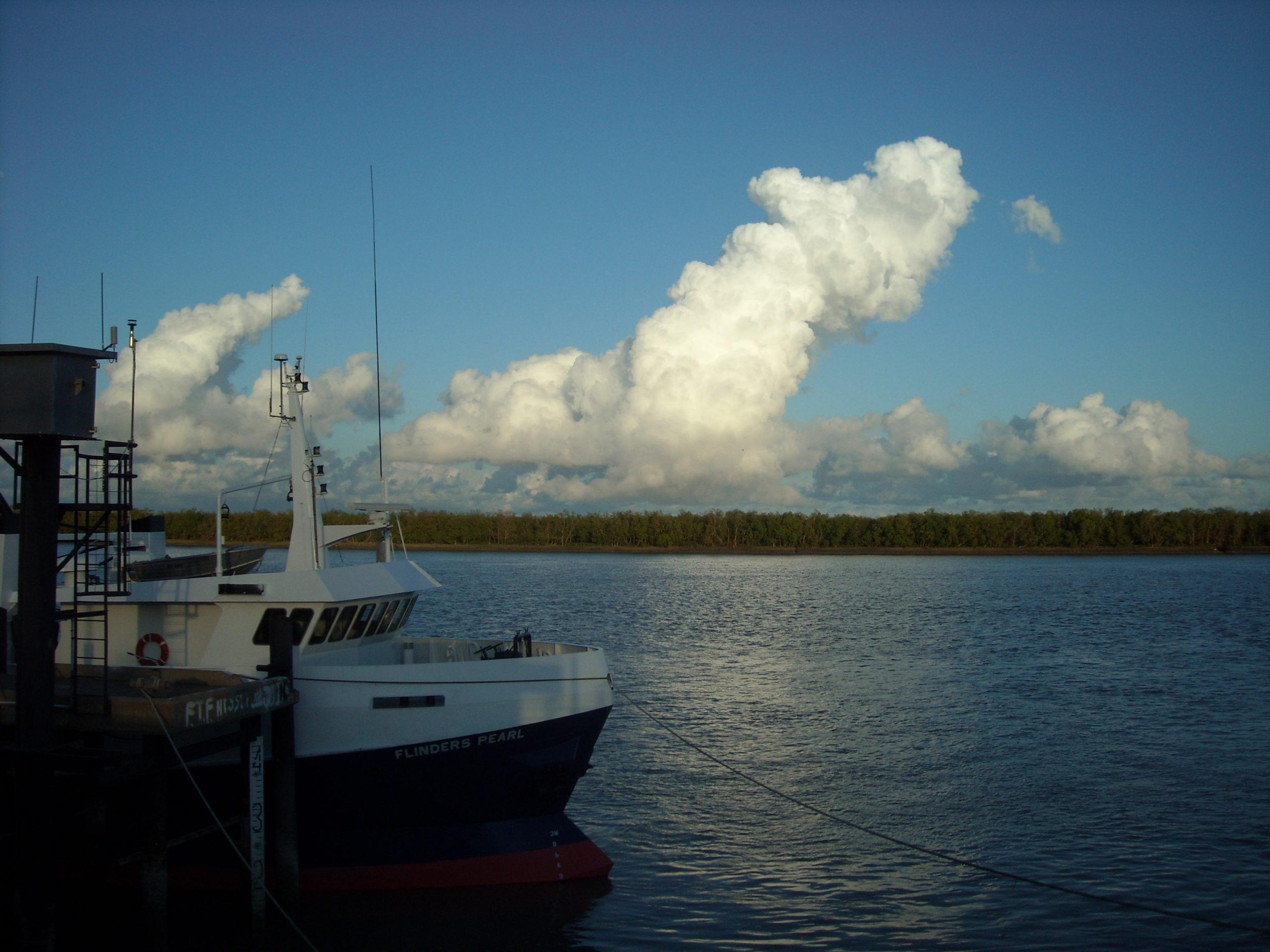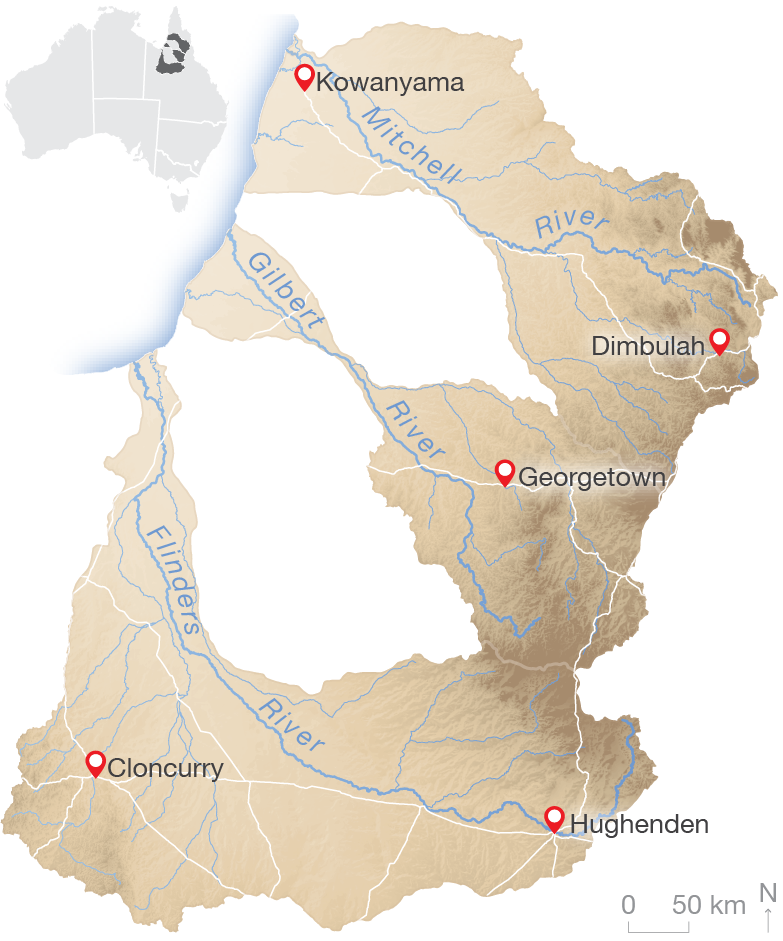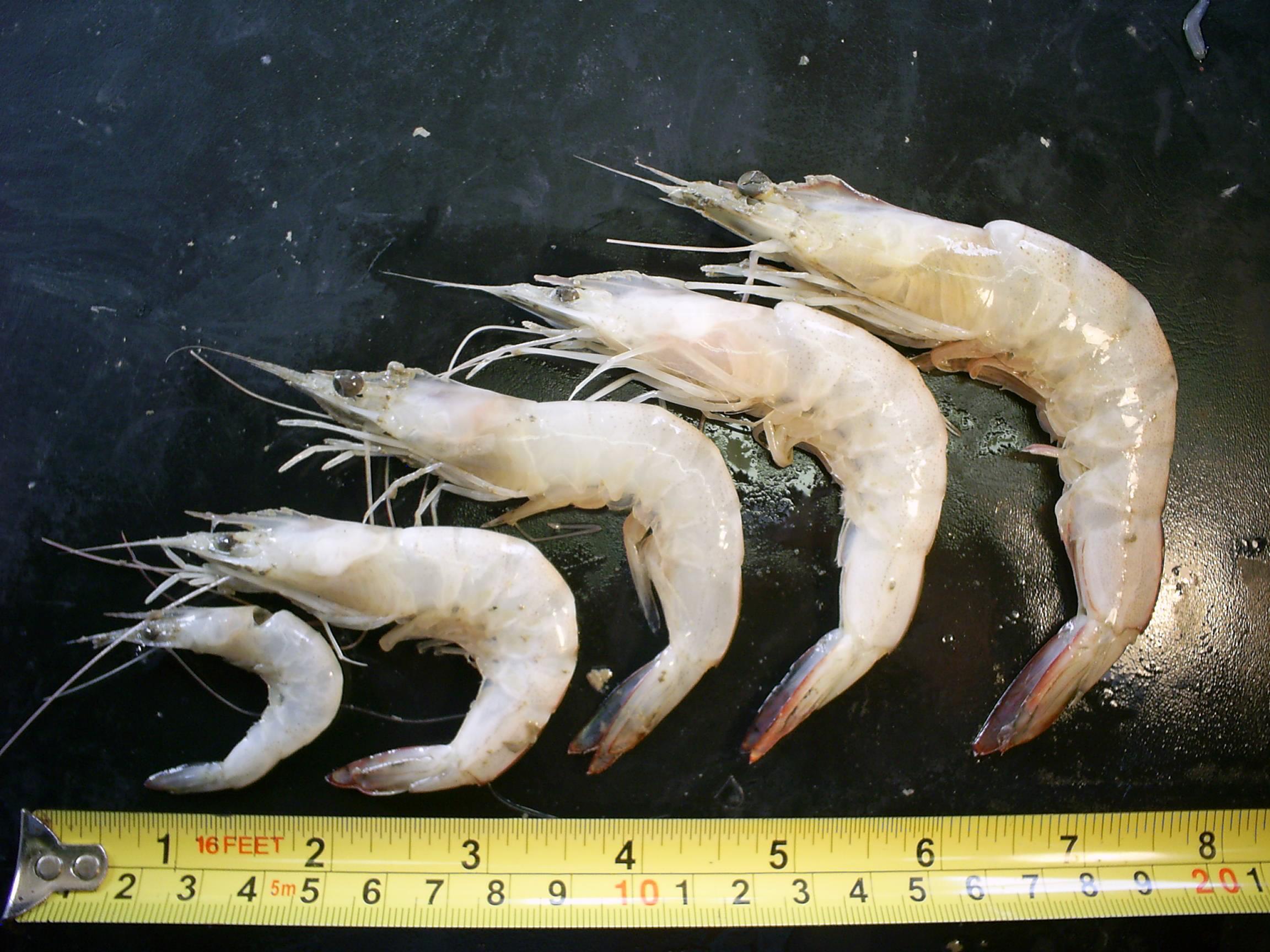River flows in the Gulf of Carpentaria are an essential part of the lifecycle of numerous important fishery species in the Gulf, particularly prawns and barramundi. Hub research has built on long-term partnerships with these fisheries and used a combination of on-water sampling, data analysis and satellite imagery to improve understanding of the possible impacts of water extraction from Gulf rivers on these fisheries.
There has been very little water resource development of the rivers that flow into the Gulf of Carpentaria. They remain in near-pristine condition and support species important to commercial fisheries, including banana prawns and barramundi.
The Northern Prawn Fishery (NPF) targets prawns in northern Australian waters. It is a carefully regulated Commonwealth fishery managed using licensing allocations, total catch across the fishery, net size limitations and adjustments to the fishing season as required.
The barramundi fishery in the Gulf of Carpentaria is managed between Queensland and Northern Territory government departments for their respective regions of the Gulf.
The NPF is particularly productive, with a catch value between $80 and $150 million per year. Since the early 2000s, the fishery has also substantially improved its sustainability to ensure operations into the future. This has included collaborating with researchers like Hub Project Leader Professor Michele Burford of Griffith University to help guide their management decisions.
Austral Fisheries manage 11 boats in the NPF, which comprises around 20% of the fleet, and has valued the opportunity to develop long-term partnerships with researchers to understand more about their target species.
This is the beauty of Michele Burford and her team studying our fishery over the last 30 years. Each time we meet with the team, they build a better picture, a more complete picture that starts to tie in all these environmental factors into the productivity of our fishery.
– Mr Andy Prendergast, Northern Fleet General Manager, Austral Fisheries

The NPF is a very productive fishery in the Gulf of Carpentaria that could be affected by water extraction from Gulf rivers. Photo: Michele Burford.
Prawns and barramundi use the river, estuarine and ocean ecosystems in different ways, but both species respond to altered river flow.
The banana prawns live in the estuaries during their juvenile phase. They arrive as juveniles, fatten up and grow, and then move out into the fishery. The barramundi move up and down the rivers but need the floodplains as breeding and feeding areas when these rivers flood in the wet season.
These species use the rivers in quite distinct ways but maintaining the seasonal flow patterns of the rivers is essential for the lifecycles of both of these important fishery species.
The Gulf has 6,000 km of coastline and about 100 different rivers that all provide critical habitat for target species at various times in their lifecycle. However, due to the pressures from water development, this work focused on the Flinders, Mitchell and Gilbert rivers in Queensland.

Professor Burford’s team has investigated the links between flows of the Flinders, Gilbert and Mitchell rivers and the productivity of coastal fisheries in the Gulf of Carpentaria. These three rivers make the south-east corner of the Gulf a productive area. Image: NESP Northern Australia Hub.
Hub researchers found that the contribution of these rivers to fisheries varies from year to year and river to river, but not in any consistent pattern between the rivers.
When we look at density of banana prawns in this system, there’s no difference between these three rivers and they vary from year to year. So, we can’t generalise about which rivers are more important for the fishery. All these rivers are important.
– Professor Michele Burford, Project Leader, Griffith University
These rivers are all connected to one another and function best as a collective, so much so that their importance cannot be ranked – Gulf fishery species rely on productivity across all the estuarine and river systems.
Basic relationships between river flows and total catch for these major fisheries are already known – for example, in a low-flow year, we would expect the catch of barramundi and prawns to go down – but this Hub research is unpacking the more nuanced connections between river flows and how these species respond.

Banana prawns rely on a freshwater flooding cue to migrate out to sea. Water extraction during low-flow years could eliminate this cue and drastically reduce prawn catch. Photo: Michele Burford.
This research is supporting these fisheries to make decisions that will secure their long-term sustainability and stability, and the health of their target species.
Even though as fishers, we only see the prawns at one part of their lifecycle, we have a reasonably good understanding of the biology of the species thanks to the efforts of Michele Burford and other researchers in the area. They’ve educated us about the links between all the environmental factors that go into making a good ecosystem.
– Mr Andy Prendergast
The natural annual variation in flows from these rivers can also have significant effects on subsequent years’ catches. Near-shore coastal waters in the Gulf are nutrient-poor and rely on big flooding events to ‘re-charge’ nutrients required for growth and productivity from the base of the food web up to prawns and barramundi.
High-flow years not only carry invaluable nutrients downstream – which leads to big catches in the season that follows the flooding – but also support increased growth and productivity for future years.
Strong flooding events change the salinity and give the prawns the cue to leave the estuary and get out into the Gulf. It’s critical that as many prawns get out to sea as early as possible. This helps them get away from catfish, barramundi, and all the other fish that are predating on them. When they get out to sea early, the signal for them to grow is also very strong and they start growing quickly.
– Mr Andy Prendergast
Hub research is not just supporting good management of the existing fisheries, it’s also ensuring that water planners can fully understand the consequences of any future water extraction proposals on these fisheries and make informed choices about future water development.
Research outputs
Scientific papers
Reports
Factsheets
Videos and presentations
Impact stories
Media
Project webpage
Attributions
We acknowledge Aboriginal and Torres Strait Islander Peoples as the traditional custodians of the lands on which we work. We pay our respects to Elders of the past and present, and acknowledge their spiritual connection to Country. In particular we would like to acknowledge the Gkuthaarn, Kukatj, Kurtijar, Gangalidda, and Garawa people of the region where this project took place.